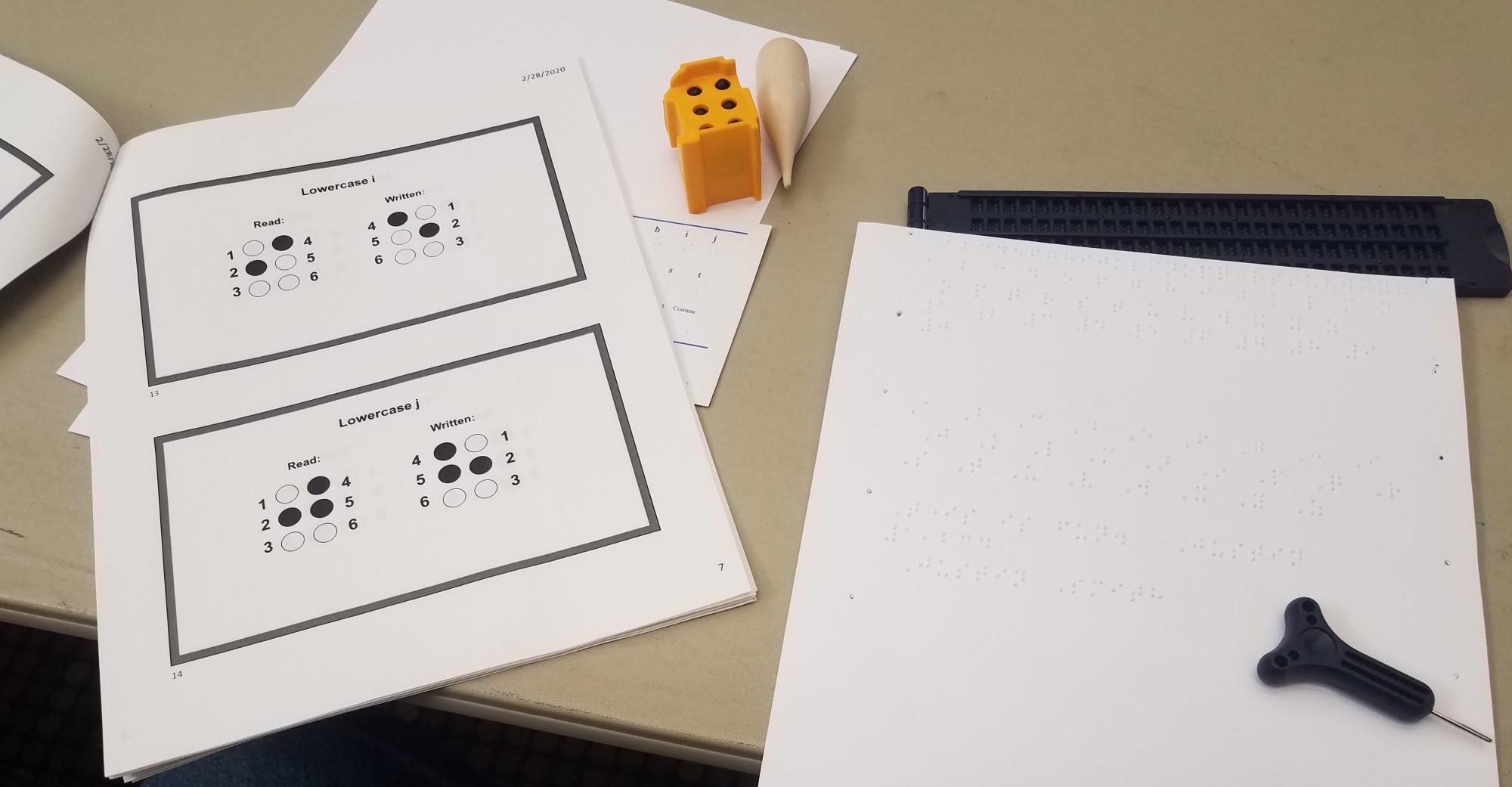Introduction to Braille Class
2/29/20
I've been interested in Braille for a little while, so when I read that Martha Washington Library was offering a free "Introduction to Braille" class, I signed up right away. I participated in this class on 2/29/20, and this article will be a description of what I experienced.
There were about 5 students I recall, including myself, and two teachers. One teacher was library staff, and the other was a blind friend. Both would teach, answer any questions, and check our work. The Braille being taught was uncontracted (or grade/level 1) Unified English Braille (UEB).
Each student received a plastic bag with a "cheat sheet" of the alphabet and some punctuation, a presentation of how to read and write the letters, numbers, and punctuation, a slate and stylus (like these), "eraser", and a small device to practice anything that can be done with a single Braille cell (similar to this Braille block, but you can see the exact type in the photo below). We also received a few fun activity sheets. We students could keep and take home anything that was paper. The rest was to be returned to the bags when we were done, and would be used in the library's Braille kits that can be checked out.
We first learned about the basic Braille cell. We practiced the lowercase alphabet, then worked on spaces, uppercase letters, and then numbers. Then we practiced some larger numbers, sentences, and our names. Students mainly worked at their own pace. There were some students that were struggling with single lowercase letters while others were doing sentences with capitalization and punctuation. Of course, we'd all be struggling even more if we didn't have our vision to assist us. It was good to do actual writing since I had never done that before. The duration of the class was about 2 hours.
Braille, while read left to right, is written right to left (and mirror image), which I never knew, so when the paper you're writing Braille on is flipped over, it reads correctly. They also brought in a Perkins Brailler, a typewriter-like machine for typing Braille. We didn't use this but just talked about it (and how heavy it is!). When I got home, I searched and found more modern options, like a Perkins Smart Brailler. I'm sure there are some other options as well.
The library staff mentioned that they plan future Braille classes, perhaps contracted and specialized Braille (math, for example) in the future. I strongly recommend checking out these types of classes. You never know if you will be blind (and wouldn't it be nice to be able to read books and safety warnings?), make a blind friend, work with blind people, or have a blind child or family member.
One series of Braille books my son and I like is the DK series, for example DK Braille: Animals. They not only have text and Braille, but also pictures that you can touch and trace, so it is a very good tactile experience.
Thanks for reading.
Please anonymously VOTE on the content you have just read:
Like:Dislike:
